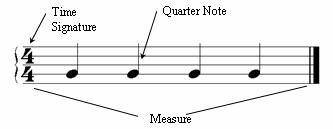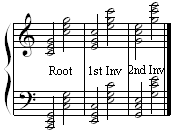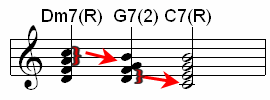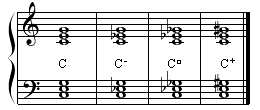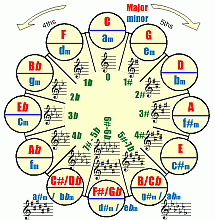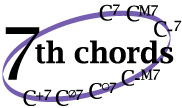Getting Notes Down Cold The examples below show equal durations of lengths of time for Notes. The “ties” make the other notes combined to be of the same time count. Let’s do the math. Quarter note math: One Quarter note = Two 8th notes = one 8th note and two 16th notes = 4 sixteenth notes. Quarter note time – shown tied, each gets one beat and one clap: More “tie” relationships. Fill in the blanks. Counting Quarter...
Rhythm Quadruple Pattern
Rhythm Four Part Beats Here we will move into dividing beats into four parts. We will call it a quadruple rhythm pattern. We work with Reviewing duple patterns Add new terms for counting the rhythm quadruple pattern. Easily seeing the different applications of using the quadruple pattern. So what happens when we use sixteenth notes on a quarter beat pattern? OK, another great question. Let’s investigate using sixteenth notes on our 4/4 time...
Rhythm Triplet Pattern
Three Part Beats Here we will move into dividing beats into three parts. We will call it a triplet rhythm pattern. We work with Reviewing 3/4 time signature Add new terms for counting the rhythm triplet pattern. Easily seeing the different applications of using the triplet pattern. So what happens when we use eighth notes on a quarter beat pattern but have 3 notes instead of two? Another great question. Let’s investigate this 3 part...
Time Signatures
Note Duration and Beat Rhythm is expressed, stated, and describe with a time signature (time) and defines the note duration and time relationship. Let’s examine the measure for 4/4 time. FOUR / FOUR Time: So here we have one of the most common time which is four-four time. We have found it easier to start with the bottom numeral to clarify what will be counted. What the numbers mean: The bottom numeral is the duration or length of the...
Minor Intervals
Expanding Major Interval Music Theory to Minors The names of intervals are stated in such terms as a second, third, fourth, fifth, and continue up to fifteenths as was stated in the Music Theory of Intervals. Take a quick review of the Major Intervals Making the Interval Minor The 2nd, 3rd, 5th, 6th, and 7th can all be made minors by stepping down a half step. Therefore you can get a minor 2nd, a minor 3rd, and a minor 6th. However, the 5th...
Blues Scales
Playing and Signing the Blues Many questions surround the notion of the “blues”; from style, attitude, emotion, sound, structure, type of note, mood, and type of scale. It is all of this, but the scale is the starting point is for the blues. It is a minor scale. Thus a 3rd down from the major scale but using 6 notes instead of 7. Or in the case of a full scale 7 instead of 8. It is closely related to the minor pentatonic scale which...
Chord Inversions
How to Play Basic Chords in Different Positions You’ve learned that music chords are the structures that are the words of music. Chord Inversions give you new inflection to the words so that you can create a different but similar sound. Inversions of chords are simply taking notes that would normally be played in one position and changing them to a new position. For three note chords there are two inversions, a 1st inversion and a 2nd...
Chord Progressions
How to Move Around the Basic Chords of Music Chord Progressions are one of the most asked about music topics around. A sequence of chords is what makes music flow from one place to another. A composer of music may use one chord over many measures to add melody and flavor to their music. Eventually they will move to another chord to keep the song or music piece interesting. In other cases the music may change chords on every beat. What seems to...
Music Theory Chords
Basic Chords the Musicians Words Let’s explore the element of music theory chords. Music chords are the structures that are the words of music and are constructed with the notes of the scale and in all the key signatures. A lot of things to consider? It is, however, by taking a step through the process of how various chords are built you will have the fundamental knowledge necessary to work with any key signature and any scale you want...
Circle of Fifths
How to Easily Learn Key Signatures Using the Circle of Fifths The Circle of Fifths has been developed as a way for the music student to remember how key signatures are related. It is a great visual aid that show the math we have talked about previously. This section provides you with steps on how to create your own tool for this basic theory. Using the principals learned in key signature math you can create your own circle to show the fifths....
Close Chord Progression
Make Chord Changes with Very Little Movement Close Chord Progression is the ability to make dramatic chord changes with slight movement in notes. As can be seen in the graphic to the right the chord movement of a series of fifth changes is accomplished by changing two notes for each chord. There is so much to discuss here, there is just no way to cover it all in such a short page of information. Therefore, we will focus on the concept of...
Seventh Chords
7 Kinds of Sevenths That Add Character to Songs Seventh Chords are used to to create hip sounds with the music. The four chords discussed at Music Theory Chords can all have a 7th interval added to create a new sound. There are 7 kinds of sevenths when you can create by adding major and minor 3rds. Why only seven and not eight? It seems like Karma to have seven kinds of sevens. Types of Seventh Chords Going back to the original chords we...




